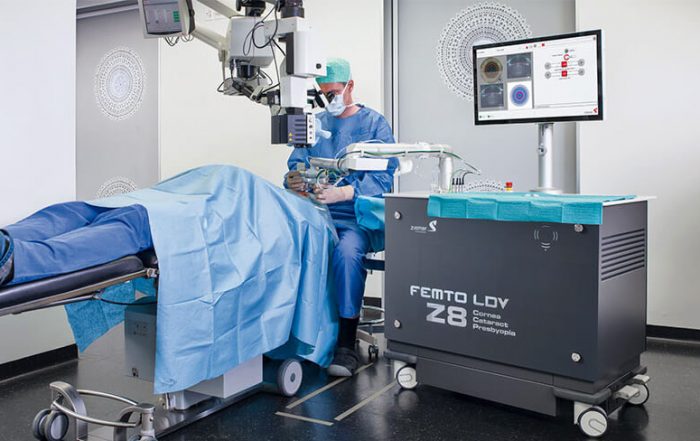Oculoplasty
Oculoplasty or ocular plastic surgery deals with all the alterations that may appear around the eyes (eyelids, eyebrows, etc.), both aesthetic and functional. Some of the most common pathologies that can be solved with eyelid surgery are: excess skin, bags, drooping eyelid (eyelid ptosis), inverted eyelid (Entropion), everted or drooping eyelid (Ectropion), alteration of the eyelashes (Distichiasis), eyelid tumours and various sequelae.
Treatment for Palpebral Ptosis
Ptosis is the medical term describing drooping of the upper eyelid. It can affect one or both eyelids. In some cases, it may obstruct part of the eye’s field of vision if the drooping of the eyelid is significant. Ptosis can be mild or moderate, covering only the upper part of the pupil, or severe where the entire pupil may be covered by the drooping eyelid. Ptosis from birth is called congenital ptosis.
Treatment for Ectropion
What is an ectropion? Ectropion is the outward eversion (drooping) of the lower eyelid margin, resulting in exposure of the inner surface of the lower eyelid and loss of contact with the eyeball. It usually affects both eyelids at the same time.
Trichiasis and Distichiasis Treatment
Trichiasis is the abnormal growth of the eyelashes towards the inside of the eye, causing continuous rubbing against the surface of the eye. In addition to being very annoying, this can cause damage to the cornea and even loss of vision.
Distichiasis is the growth of new eyelashes from the meibomian glands. The meibomian glands are glands in the eyelids very close to the surface of the eye that do not normally harbour eyelashes. Distichiasis is usually caused by chronic inflammatory processes as in trichiasis. Distichiasis can also be congenital. Treatment is the same as for trichiasis.


